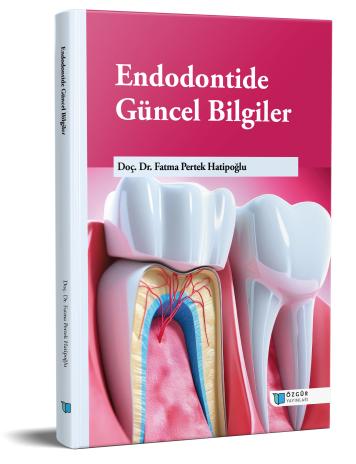
Kök Kanal Tedavisinin Yenilenmesi
Şu kitabın bölümü:
Pertek Hatipoğlu,
F.
(ed.)
2025.
Endodontide Güncel Bilgiler.
Özet
Bu metin, kök kanal tedavisinin yenilenmesi ve yeniden tedavi sürecindeki çeşitli aşamaları ve teknikleri ele almaktadır. Kök kanal tedavisinin başarısızlığının başlıca nedeni, yetersiz dezenfeksiyondur. Birincil kök kanal tedavisi başarısız olduğunda, periapikal lezyonlar cerrahi yöntemlerle veya cerrahi olmadan yeniden tedavi edilebilir. Kök kanal yeniden tedavisi, dişten kök kanal dolgu materyallerinin çıkarılması, ardından kanalların temizlenmesi, şekillendirilmesi ve doldurulması işleminden oluşan cerrahi olmayan bir prosedürdür. Dişin stratejik önemi ve tedaviye değer olup olmadığına karar verilmelidir. Kısa kök dolgusu ve bozulmamış anatomisi olan dişlerde başarı şansı daha yüksektir. Yeniden tedavi, doğru teşhis, temizleme, dezenfeksiyon, dolgu ve restorasyon gibi birincil kök kanal tedavisi kurallarına dayanır ancak, vital veya nekrotik pulpalı dişlerde farklılıklar gösterir. Doğru pre-operatif tanı, yeniden tedavi sırasında karşılaşılabilecek sorunları öngörmek için önemlidir. Bu, kök dolgusu tipi, kanal anatomisi, eğrilikler ve daha önce tespit edilmeyen kök kanallarını içerir. Kök kanal sistemine yeniden girerken bu faktörlerin dikkate alınması gereklidir. Yeniden tedavi sırasında, enfekte kök kanalları bakterilerle, bazen mantar veya virüslerle de enfekte olabilir. Bu enfeksiyonlar, genellikle biyofilmle ilişkilidir. Dolgu materyalinin ve kanal sisteminin mikrobiyal çeşitliliği, tedavi başarısını etkileyebilir. Temizleme ve dezenfeksiyon işlemi önemlidir. Kök kanal sistemi tamamen temizlenmeli ve tüm kanallar tespit edilmelidir. Kök dolgusu çıkarılmadan önce, koronal kanal şekillendirmesi ve temizliği yapılmalıdır. Yeniden tedavi sırasında dolgu materyalini tamamen çıkarmak oldukça zordur. Kök kanalındaki dolgu materyali, mekanik olarak ve gerekirse çözücülerle çıkarılmalıdır. İrrigasyon, yeniden tedavi sürecinde kanalın temizliği ve dezenfeksiyonu için kritik öneme sahiptir. EDTA veya sitrik asit gibi şelatlayıcı çözeltiler, kanal duvarlarının temizlenmesine yardımcı olabilir. Sodyum hipoklorit (NaOCl) genellikle tercih edilen irriganttır ve ultrasonik aktivasyon ile etkinliği artırılabilir. Yeniden tedavi sırasında, kök kanalının dezenfeksiyonu için sodyum hipoklorit (NaOCl) yaygın olarak kullanılır. Kök kanal tedavisinin yenilenmesi, doğru teknikler ve etkili dezenfeksiyonla başarılı bir şekilde yapılabilir. Yeniden tedavi, genellikle daha zorlayıcı olsa da, doğru tedavi planı ve hazırlık ile başarılı sonuçlar elde edilebilir.

